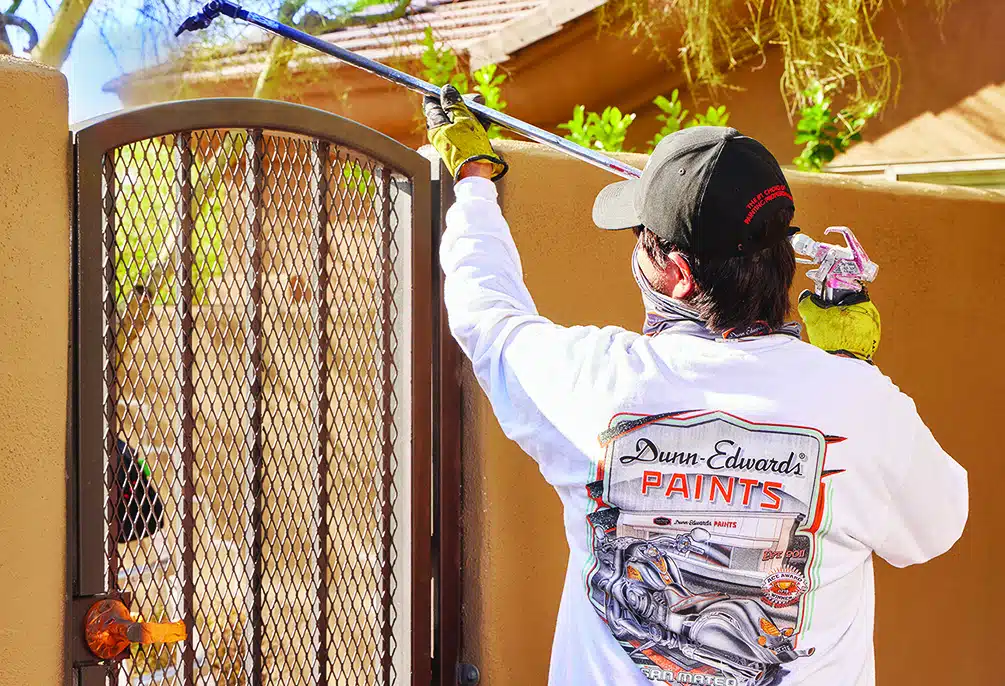How to Properly Pressure Wash
02/22/2016 | Dunn Edwards |
A new coat of paint can bring new life to a surface; yet, the final results are only as stable as the surface that’s underneath, which means that peeling or flaking paint should always be removed prior to applying a fresh coat. Pressure washing is an efficient way to remove paint from wood, metal, concrete and other exterior surfaces — and can drastically cut preparation time.
To get the be results, start by choosing a pressure washer that provides the most effective power for removing paint, typically 2,000 to 4,000 psi. When you start the job, prepare the area around the structure that needs to cleaned. Make sure to shut all doors and windows and cover all outdoor fixtures. Select a nozzle that will work best with the surface to be cleaned — in most cases, the yellow 15-degree nozzle is the best choice.
When using the pressure washer, hold the gun and wand firmly at a 45-degree angle about 2 feet from the surface. Working at this angle and distance allows the spray to get under the layers of paint without damaging the surface. Work in sections and keep the nozzle moving at all times, spraying in a downward and sweeping motion. This will direct all paint chips away from the surface.
It may not be necessary to strip all of the paint; however, once the surface has dried completely, you may need to scrape or lightly sand any loose paint that was not removed with the pressure washer.
Depending on the type of surface, you may need to wait several days before you can begin to repaint.
Taking the extra time to prepare properly for a job will ensure that your paint job will look beautiful for years to come!














